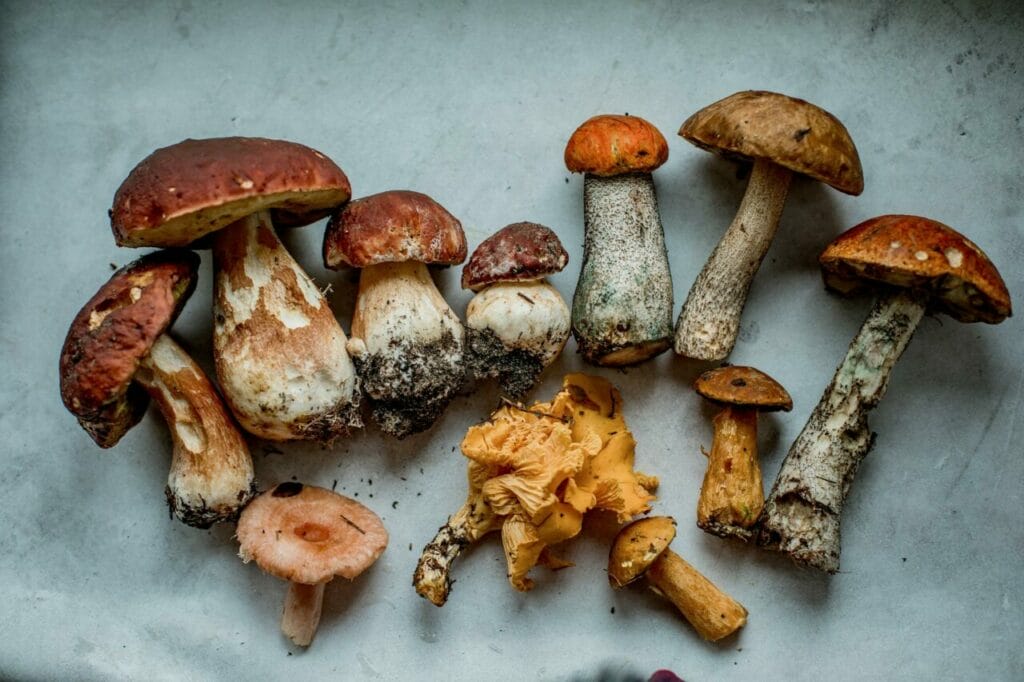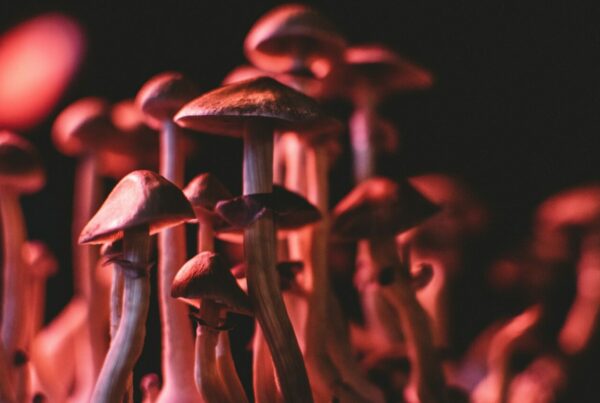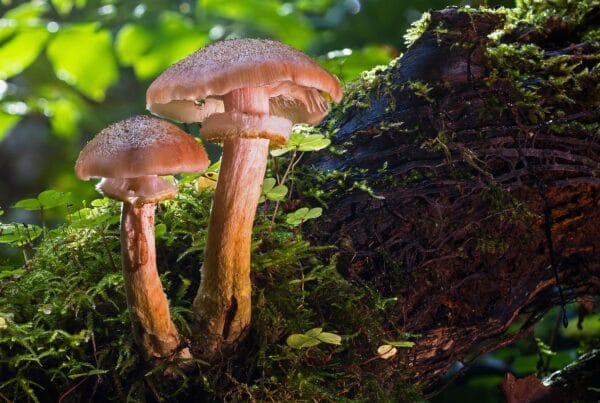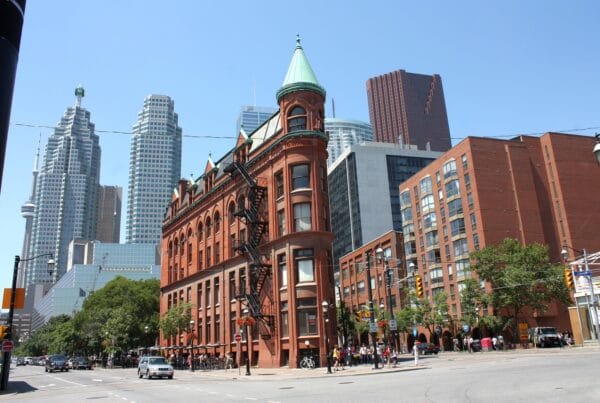Commonly used treatments for anxiety, such as medication and therapy, may not yield desired results for everyone due to potential side effects. This has led to an increased interest in alternative solutions like psychedelic therapy, utilizing substances such as “magic mushrooms Montreal” among others.
Welcome to your premier destination to buy psychedelics online in Canada. We provide expedient, secure, and confidential services.
[toc]Key Facts:
- Psychedelic therapy combines the therapeutic effects of psychedelic substances with traditional talk therapy to enhance the healing process.
- Psychedelic therapy has the potential to improve emotional wellness and overall quality of life through spiritual experiences.
- The process of integration is a vital aspect of psychedelic therapy, designed to ensure the enduring effectiveness of the therapy session.

Anxiety Disorder Trends in Canada
Data from the 2022 Mental Health and Access to Care Survey shows a concerning increase in the prevalence of anxiety disorders in Canada. The ratio of Canadians aged 15 and over diagnosed with generalized anxiety disorder in the year leading up to the survey has risen from 2.6% in 2012 to 5.2% in 2022.
Contrasting Traditional Treatment and Psychedelic Therapy
Standard treatments for anxiety disorders typically involve a combination of psychotherapy and medication. Psychotherapy, also referred to as psychological counselling, is a collaborative process between a therapist and patient aimed at alleviating anxiety symptoms.
On the other hand, anxiety medications help mitigate symptoms by tailoring the treatment to the specific anxiety disorder, while considering any concurrent mental or physical health conditions. Regardless of individual differences, psychotherapy and medication remain the primary strategies.
In psychedelic therapy, sessions are unique as they include one or two doses of a psychedelic substance, complemented by other therapeutic
Techniques:
The Power of Psychedelic Therapy
Psychedelic therapy is a healing approach that utilizes the potential of psychedelic substances to enhance the therapeutic process. Known for their hallucinogenic qualities, these substances have been integral to holistic medicine and spiritual rituals in diverse cultures for millennia.
In these therapeutic scenarios, the most frequently used substances are Lysergic acid diethylamide (LSD) and psilocybin. LSD induces alterations in mood, perception, and consciousness. Psilocybin, as noted on the Health Canada website, is the active ingredient in magic mushrooms. Consuming these mushrooms can trigger sensory experiences, such as visual, auditory, or tactile hallucinations.
Dosage Protocol for Multiple Sessions
In psychedelic therapy, practitioners assess patients to determine the appropriate psilocybin dosage for their sessions. The dosage varies widely, with some patients beginning with moderate amounts, while others can handle larger doses. The treatment generally comprises one to three sessions, each lasting between six and eight hours and scheduled several weeks apart. This method is a departure from traditional medications that require daily use until a healthcare provider advises otherwise.
A Transformative and Spiritual Experience
Unlike anxiety medications, which aim to control symptoms, psychedelic therapy can induce transformative visions or feelings of divine communion and aims to tackle the root causes of the condition. It can significantly impact emotional health and the quality of life.
These immersive experiences can promote deep insights, heightened self-awareness, and better emotional processing. These outcomes can catalyze personal growth, inspire positive behavioral changes, and enhance overall mental health.
Impacts
| Expanded Consciousness | Altered states of consciousness provide a new outlook on the world. | Such an expanded awareness typically results in the following: Deep insightsEpiphaniesImproved understanding of oneself and one’s surroundings |
| Emotional Healing | Enables emotional healing by offering the chance to face and process unresolved trauma, grief, or emotional pain. | This process aids in:Unearthing deeply suppressed emotionsReleasing emotional blockagesImproving emotional well-being |
| Increased Self-Awareness | Enhances the interaction between sensory brain regions while reducing connectivity within the default mode network. This network integrates brain regions that are interconnected, focusing on self-referential thinking and the personal perception of oneself.” | These regions aim to: Modify negative thought patterns, beliefs, and habitual behaviours. Allow users to gain profound insights into their authentic selves, motivations, and interpersonal interactions. |
Somatic Therapy
Somatic therapy, while not commonly linked with psychedelic therapy, is receiving growing interest due to its potential benefits. This body-centric approach explores the connection between the mind and body. It is based on the idea that past traumas can result in sensations being trapped in the body. Somatic therapists help individuals identify these bodily sensations and use therapeutic methods to alleviate this stress.
Integration
This offers a platform for clients to achieve clarity, understand perspectives, and develop wisdom from their psychedelic experiences. The transformative process occurs during integration sessions with the therapist and the client’s proactive actions beyond psychedelic explorations. Integration enhances the transformative effects of psychedelics by actively engaging with surfaced insights and emotional revelations.
Types of Integration
- Journaling. By documenting experiences, individuals can solidify memories for easier future retrieval. It also enables clients to examine their experiences from various perspectives to reveal different interpretations, meanings, and connections.
- Art. This provides an effective way to encapsulate the complex feelings and emotions of a psychedelic journey in a creative and visually expressive manner.
- Practicing Nature-based Approaches. These can be as simple as taking mindful walks in the forest or finding peace next to a tranquil body of water. Therapists can help clients recognize the intricate patterns within nature or suggest using natural elements like plants, stones, water, and candles as grounding tools.
- Engaging in Integration Groups. Group sessions with individuals who have had similar experiences offer a significant opportunity for reflection, support, and connection. The capacity of psychedelic therapy to foster a sense of interdependence and shared understanding beyond individual boundaries is central to its approach.
The Role of These Techniques in Anxiety Treatment
The primary pharmacological principle behind all psychedelics is their ability to act as agonists, or stimulators, of serotonin (5-HT) 2A receptor. An essential aspect of psychedelic research is understanding their influence on the brain’s default mode network. This network is prominently tied to repetitive thoughts and has been connected to conditions like depression and anxiety disorders. Treatment can significantly lower anxiety levels, with the effects lasting up to 12 months after treatment.
After a psilocybin session, which typically involves profound spiritual experiences, the patient enters a dialog with their therapist. In these conversational therapy sessions, trained healthcare professionals strive to attentively listen to the patient. They also employ specific practices and techniques to amplify the positive effects of the treatment.
All of these techniques work together to help those suffering from anxiety achieve long-term relief in fewer sessions compared to traditional treatments.
Transform Your World, One Session at a Time
Many individuals rely on traditional treatments for anxiety, but not everyone finds them effective or satisfying. Psychedelic therapy presents an alternative, using unique methods that can spark transformative experiences. These techniques work in harmony to yield profound, long-lasting results—sometimes lasting up to a year from just one to three sessions.
Beyond improving mental health, this therapy could also result in significant cost savings for patients. Eager to discover a new path to wellness? Explore the potential of psychedelic therapy with Shroom Gummies Canada.
Frequently Asked Questions
Is there a specific type of magic mushroom used for psychedelic therapy?
In studies on psychedelic-assisted therapy, a common oversight is the failure to specify which type of mushroom is used. Psilocybe cubensis is usually the mushroom of choice.
Online magic mushroom dispensaries provide various strains to suit different preferences. You have the freedom to choose any strain to experience the therapeutic benefits of psychedelics. However, be vigilant and choose a reliable vendor to avoid purchasing harmful magic mushrooms from dishonest sources.
How long does psychedelic therapy last?
Psychedelic therapy consists of several stages and its duration can vary. A single session where the psychedelic is taken lasts between 4 to 8 hours. The entire therapy process, which includes preparation, the session, and follow-up conversations, can extend from a few weeks to several months.
In terms of long-lasting effects, individuals report improvements in their mental health for several months or even up to a year after therapy.
After only a single or a few sessions, the effects can last for a year.Several sessions are part of the package.
Does the therapist guide the patient during their spiritual journey?
During this phase, the patient may receive guidance from professionals such as therapists or other staff members. Studies suggest that Spiritual Health Practitioners (SHPs) offer distinctive and invaluable insights to boost participants’ well-being and support their progress throughout their spiritual journey. Some people choose to seek help from an SHP, while others rely on the therapist or specialist available.
Is the concept of “set and setting” integrated into the psychedelic therapy process?
Absolutely, both the individual’s mindset (set) and the physical surroundings (setting) play a vital role in safely conducting spiritual experiences during a psychedelic therapy session. The individual’s mental state molds their spiritual journey and influences the experience, both before and during the psychedelic session. Factors such as beliefs, expectations, emotional states, and intentions determine the direction and intensity of the experience.
Primary Source: Psychedelics as Emerging Treatments for Anxiety Disorders: Opportunities and Challenges in a Budding Field – PMC (nih.gov)
About the Authors:
Franklin King, IV, MD. and Rebecca Hammond, M.D.
Related Articles:





